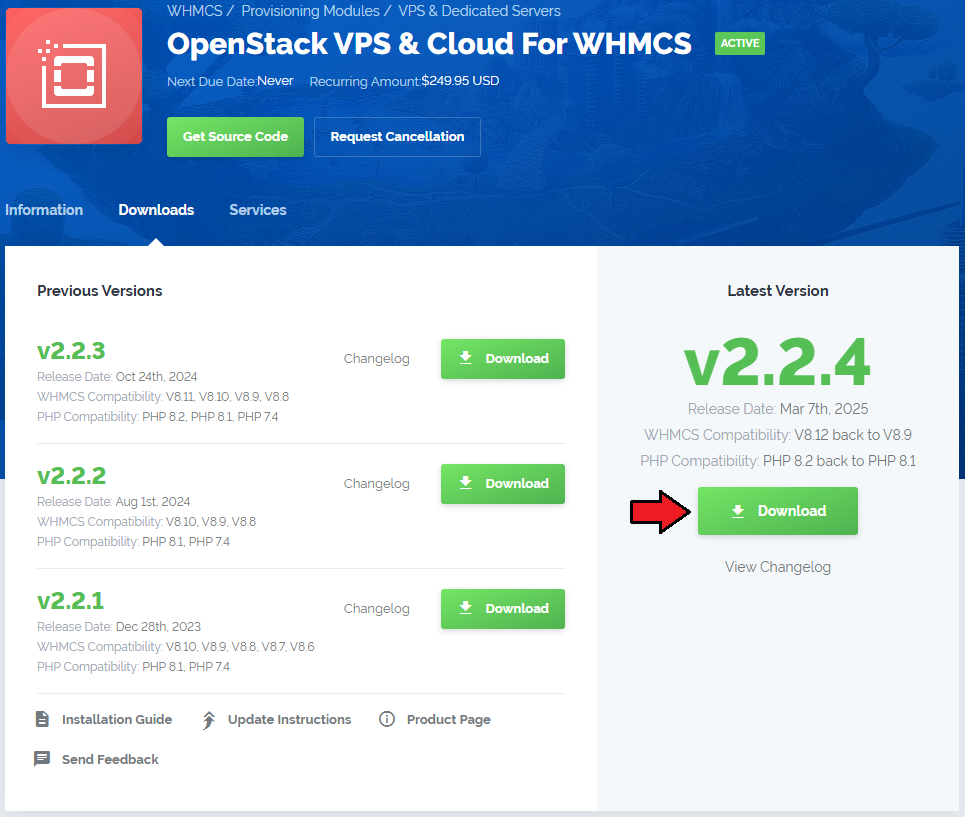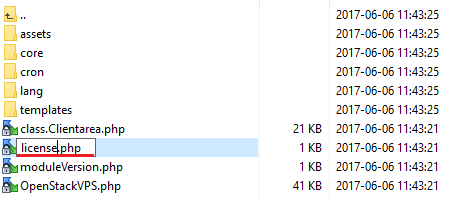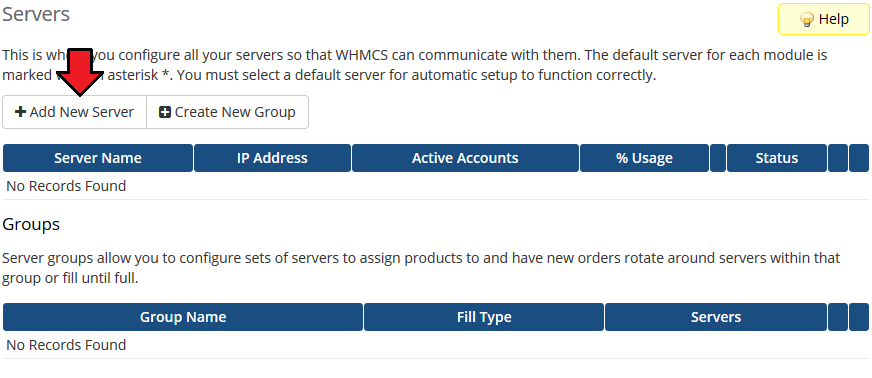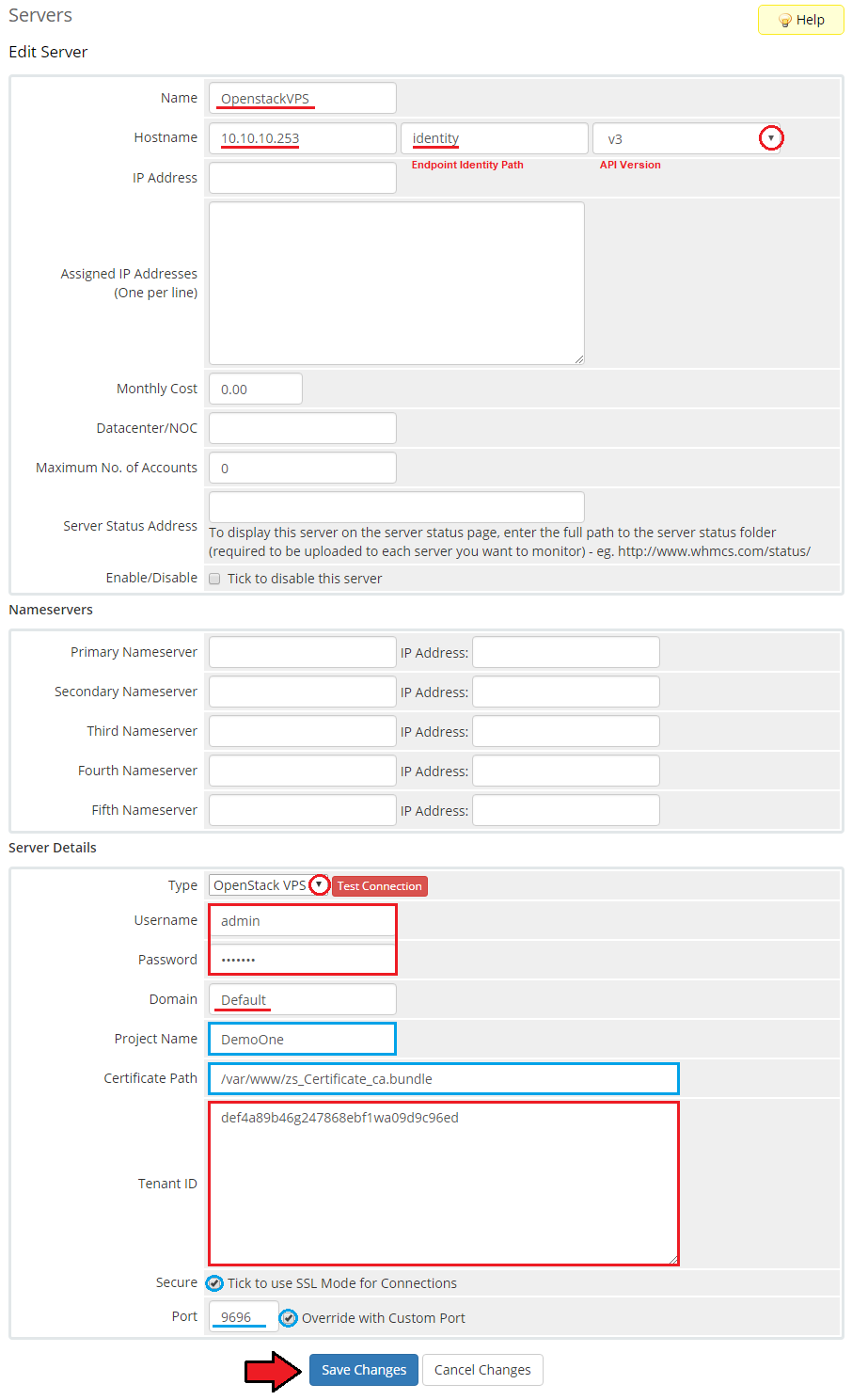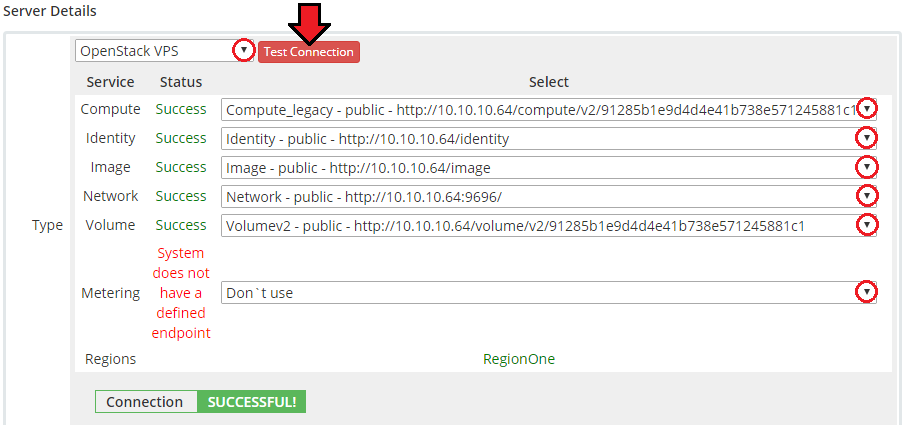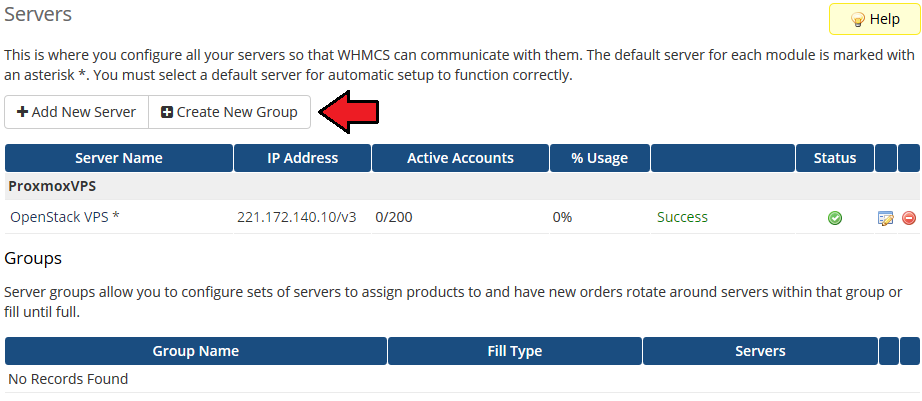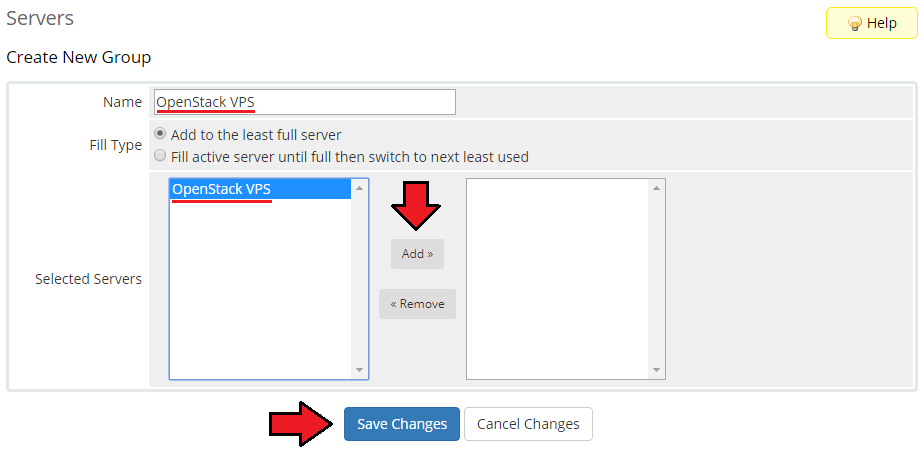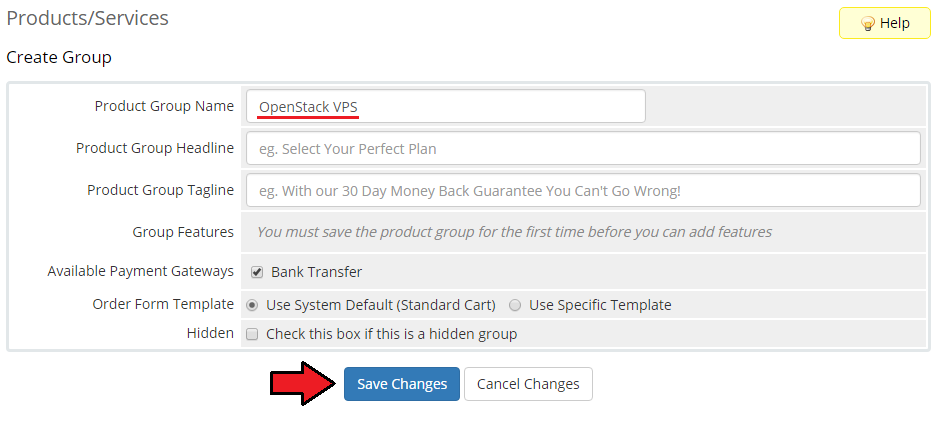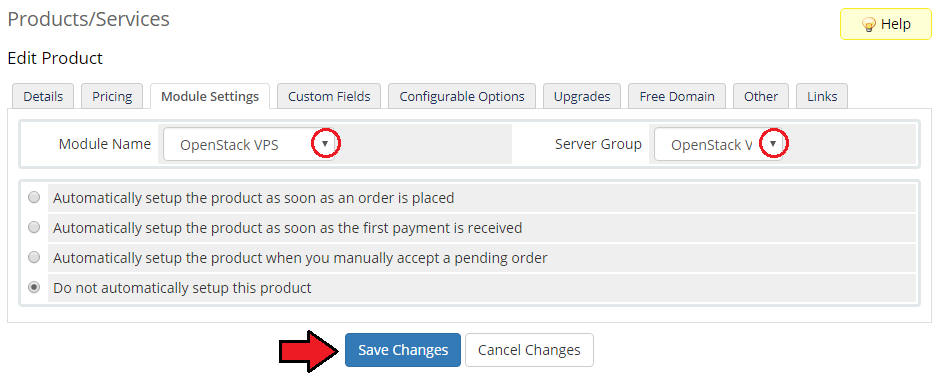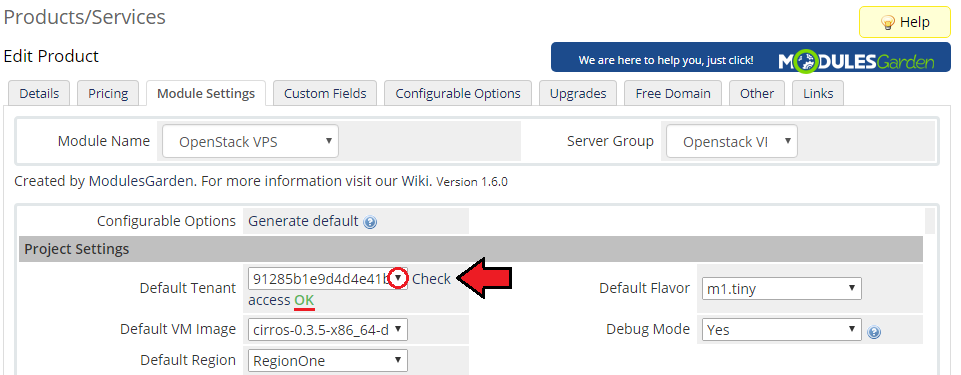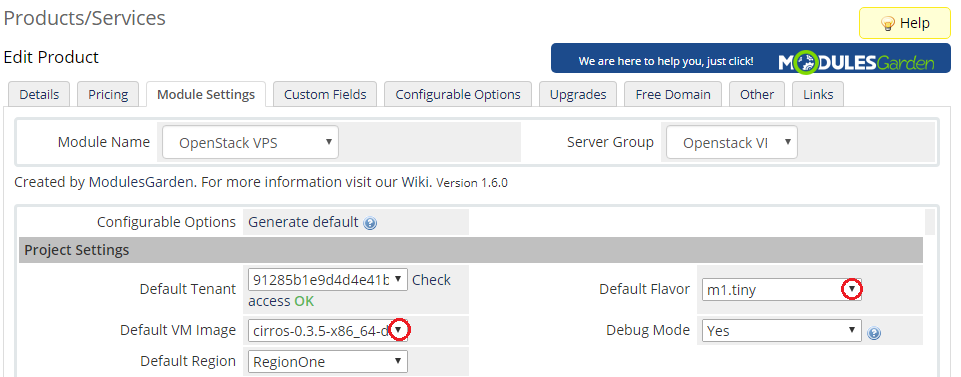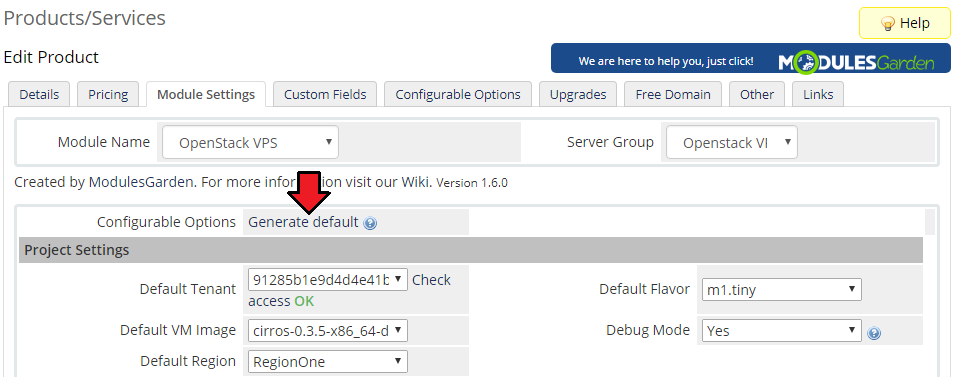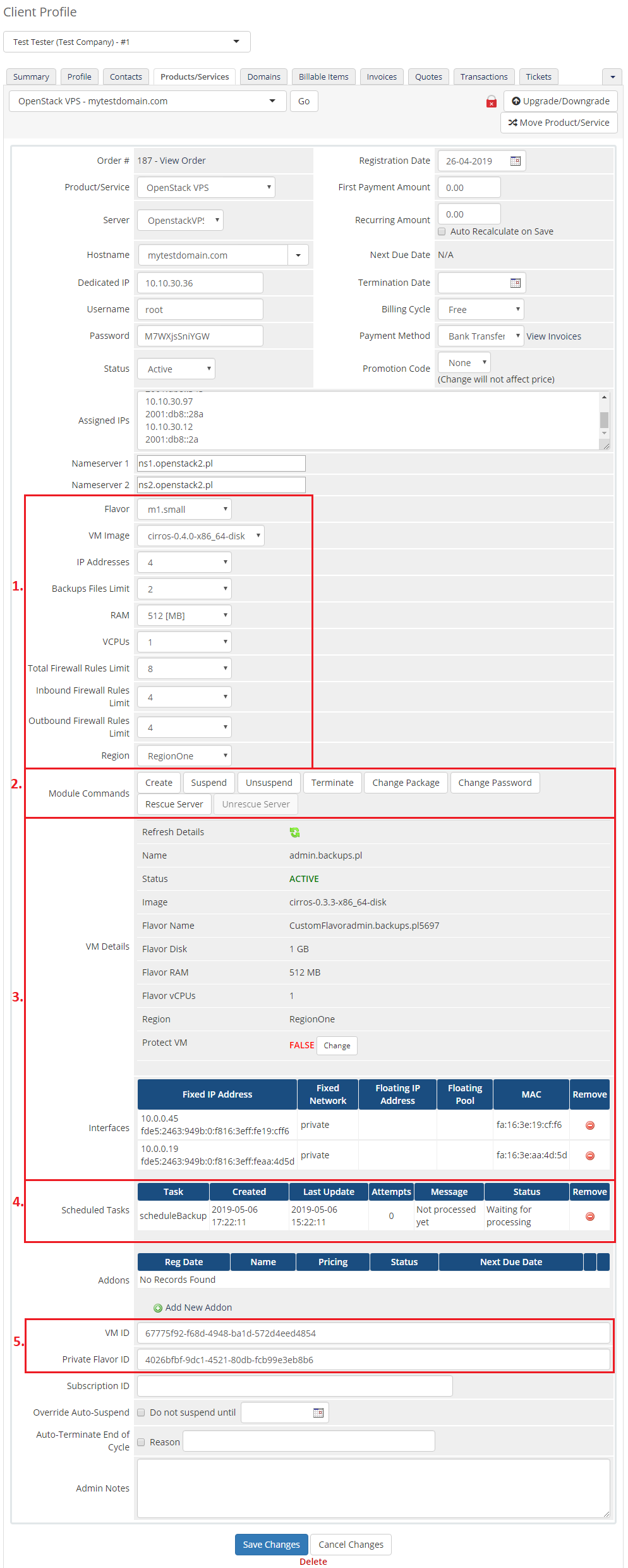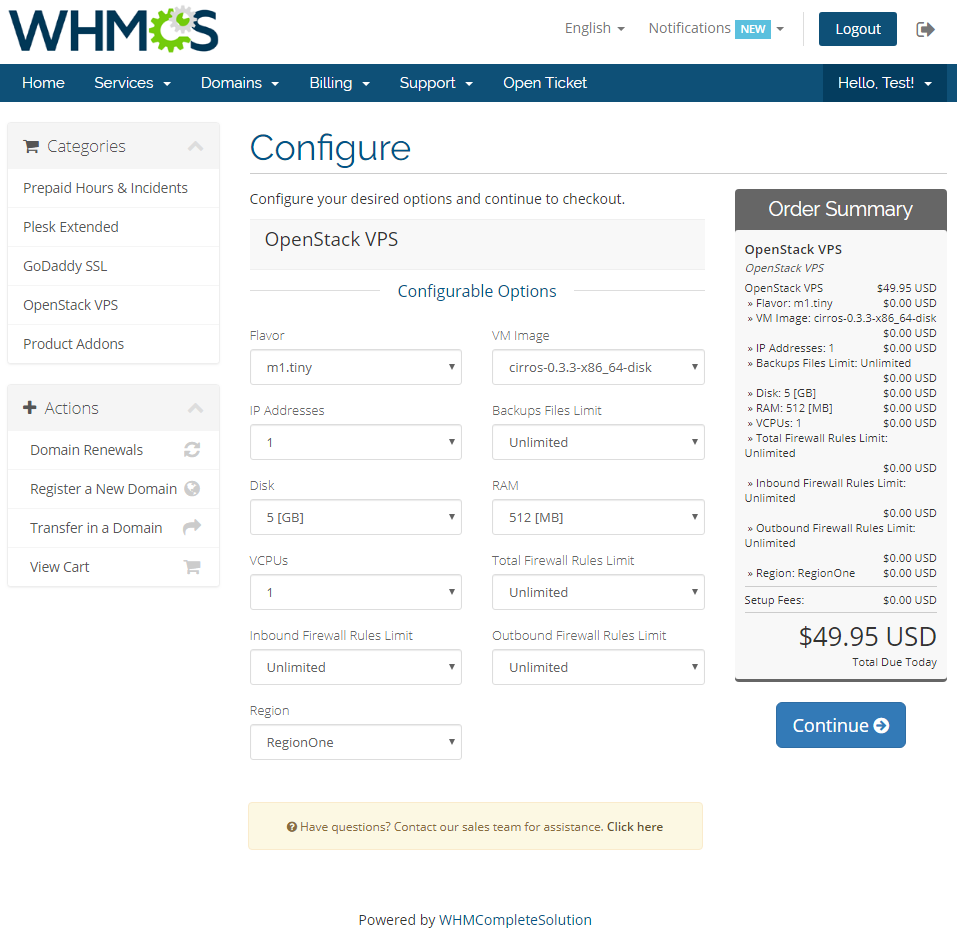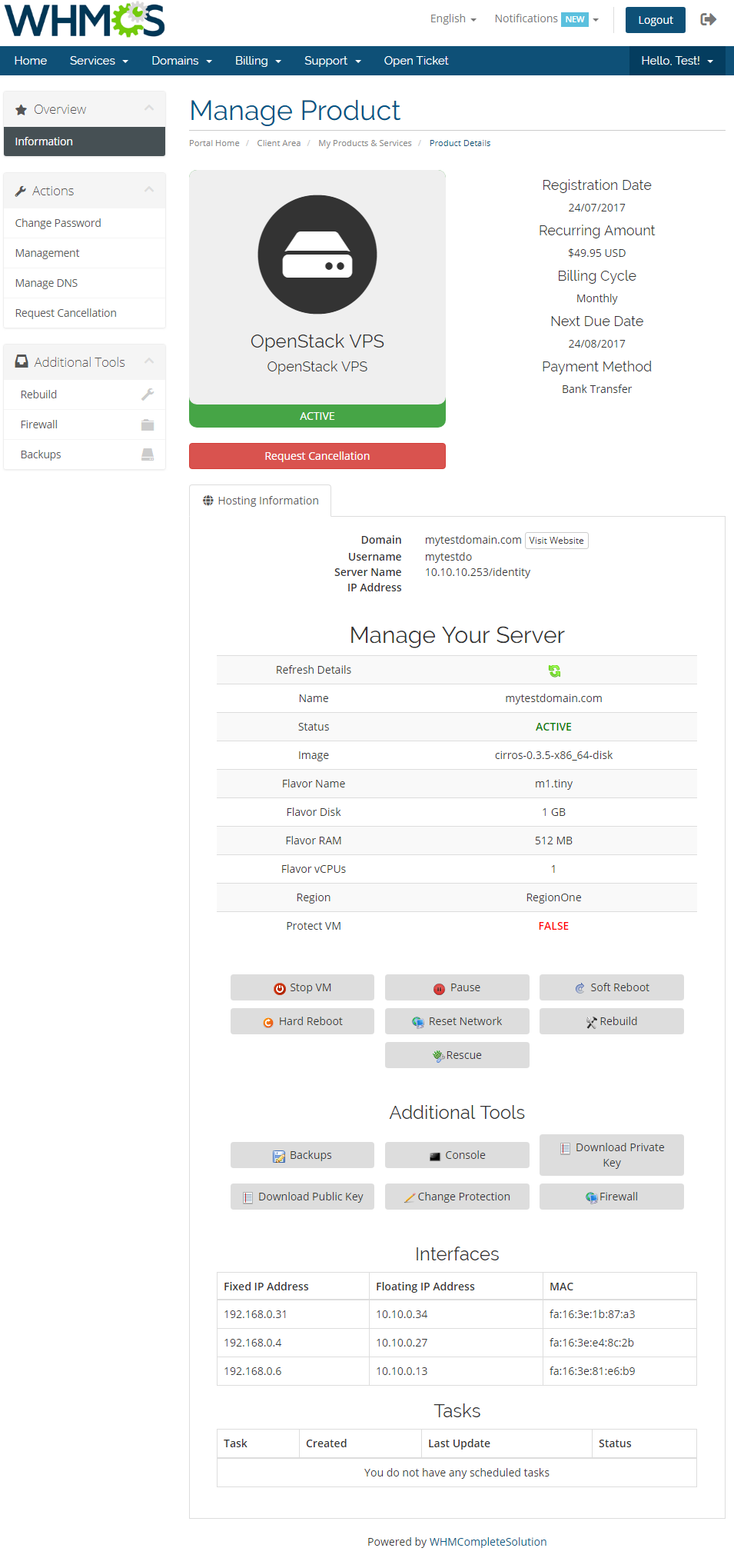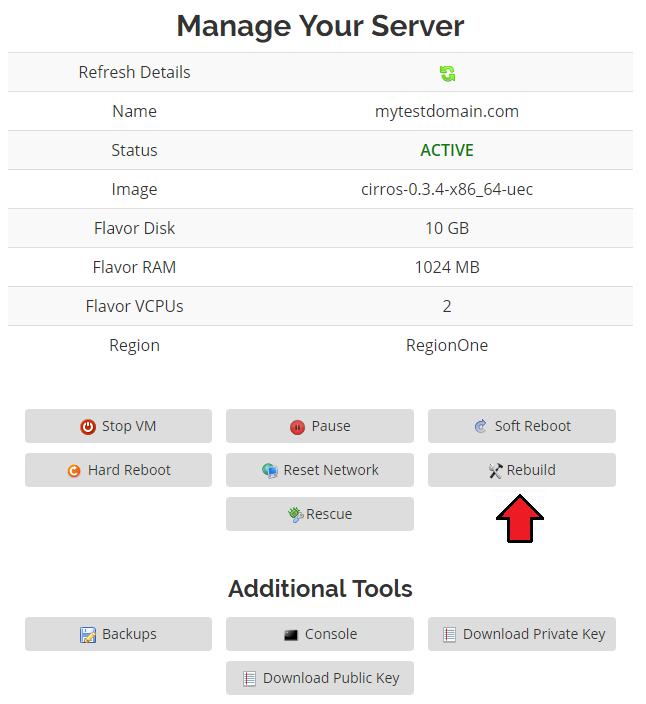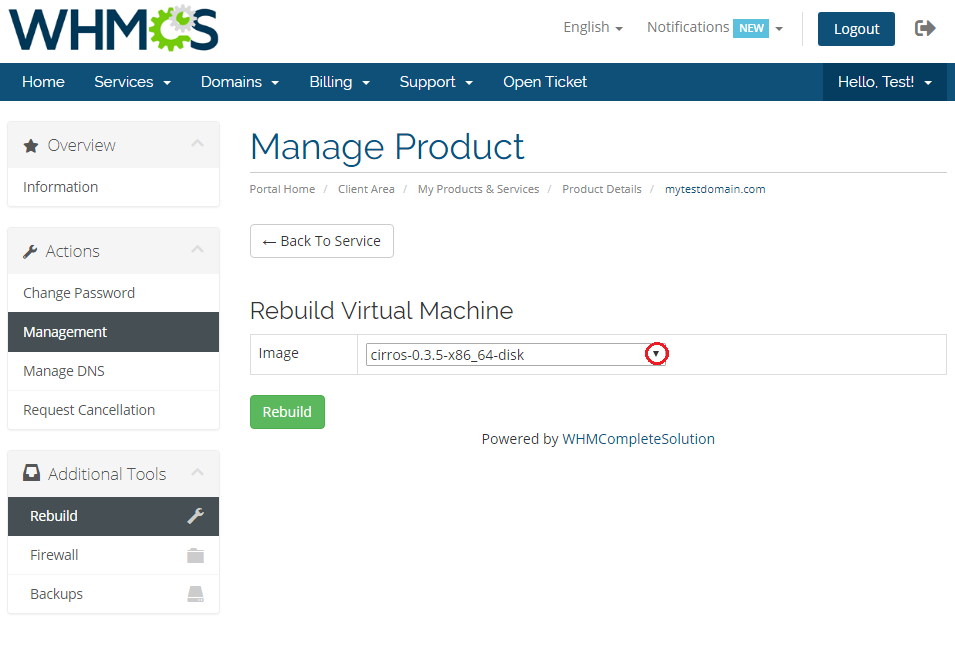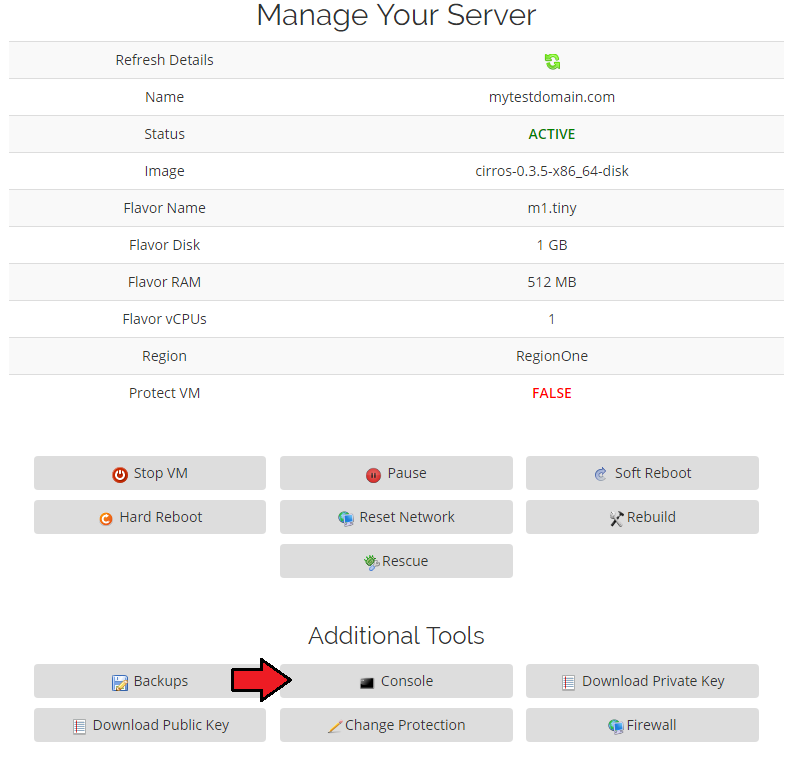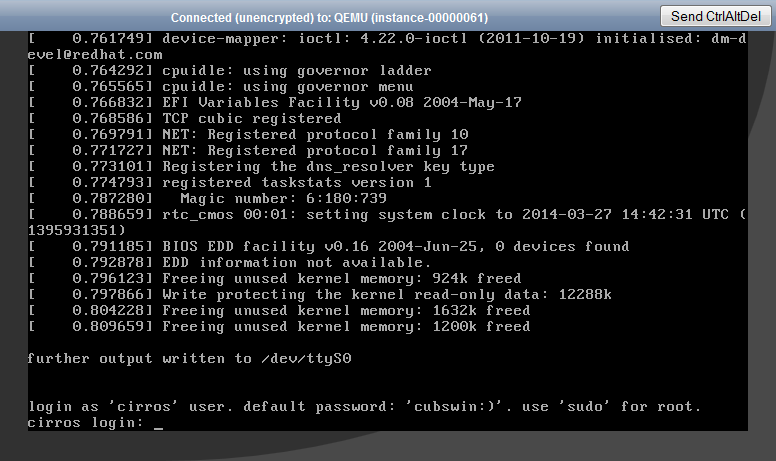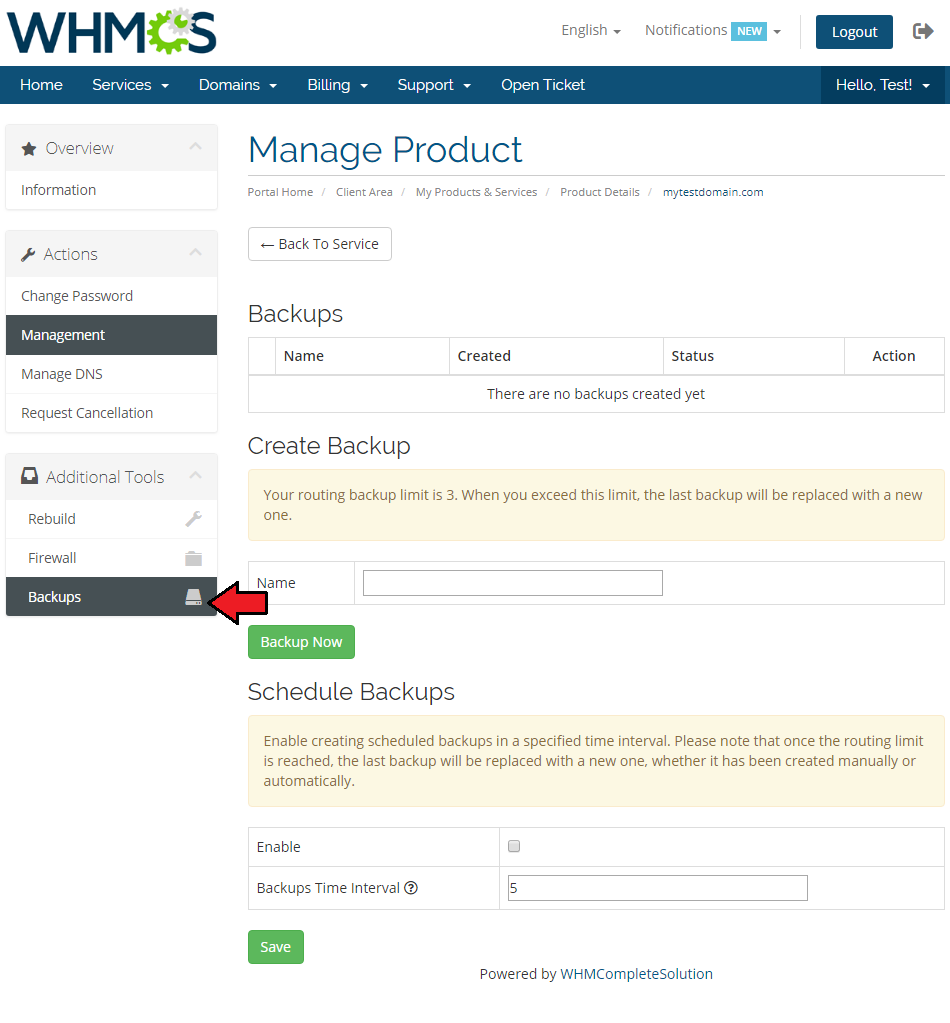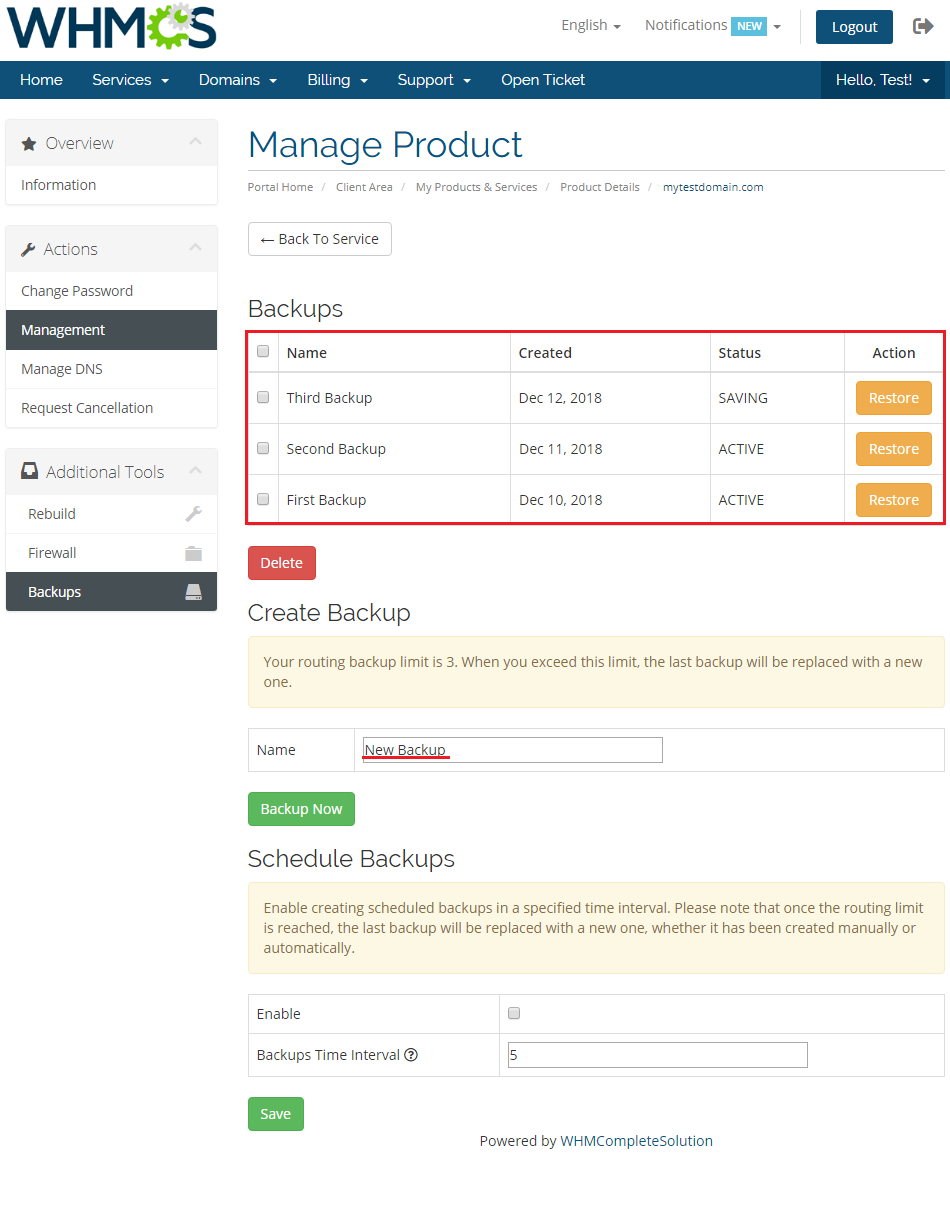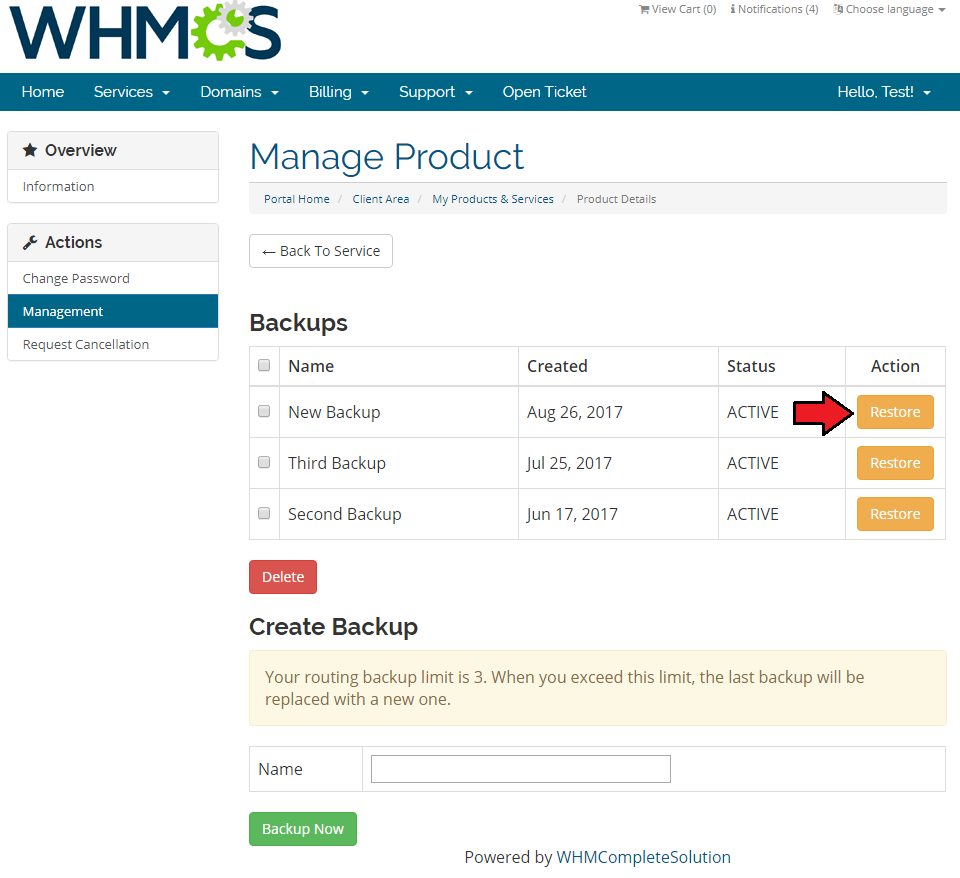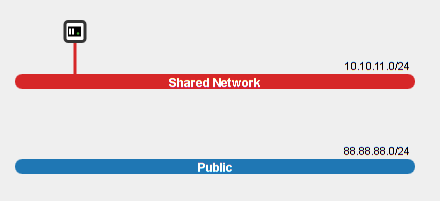OpenStack VPS And Cloud For WHMCS
From ModulesGarden Wiki
(Difference between revisions)
|
|
| Line 343: |
Line 343: |
| | {| | | {| |
| | |style="padding: 10px 0px 15px 15px;"|To reinstall your server, choose an image and root password.<br /> | | |style="padding: 10px 0px 15px 15px;"|To reinstall your server, choose an image and root password.<br /> |
| − | Afterwards, confirm through clicking on '' 'Reinstall' '' button. | + | Afterwards, confirm through clicking on '' 'Rebuild' '' button. |
| | |} | | |} |
| | {| | | {| |
Revision as of 14:29, 28 March 2014
OpenStack VPS For WHMCS is a powerful module which allows you to automatically provision virtual servers to your customers.
Additionally it allows you to conveniently manage your servers.
The great advantage of this module is the fact that customers can manage virtual servers, backups and much more in your own WHMCS client area!
|
| ✔ Suspend/Unsuspend Server
|
| ✔ Change Package (Supports Configurable Options)
|
| ✔ View Server Status And Details
|
| ✔ View List Of Scheduled Tasks
|
| ✔ View Server Status And Details
|
| ✔ View List Of Scheduled Tasks
|
| ✔ Configuration Of Backups Quantity Limit
|
| ✔ Triggerable Routing Backups (Newest Backup Overwrites The Oldest One If Backup Limit Is Reached)
|
| ✔ Configuration Of Client Area Features
|
| ✔ Configurable Options (Flavor, VM Image, IP Addresses, Backups Files Limit, Disk, RAM and VCPUs)
|
| ✔ Supports WHMCS V5 and Later
|
| ✔ Ceilometer (Required For Billing)
|
Installation and Configuration
This tutorial will show you how to successfully install and configure OpenStack VPS For WHMCS.
We will guide you step by step through the whole installation and configuration process.
|
Installation
| 1. Log in to your client area and download OpenStack VPS For WHMCS.
|
| 2. Upload and extract the module into the main WHMCS directory.
|
3. When you install OpenStack VPS for the first time you have to rename 'license_RENAME.php' file.
File is located at 'modules/servers/OpenStackVPS/license_RENAME.php' . Rename it from 'license_RENAME.php' to 'license.php' .
|
4. In order to configure your license key, you have to edit a previously renamed 'license.php' file.
Enter your license key between quotation marks as presented on the following screen.
You can find your license key at your client area → 'My Products' .
|
Configuration of Server
5. Now, we will show you how to configure a new product.
Go to the 'Setup' → 'Products/Services' → 'Servers' and press 'Add New Server' .
|
6. Next, enter your server name, IP address/hostname, username, password and admin tenant ID.
Choose 'OpenStackVPS' from a dropdown menu and press 'Save Changes' .
|
7. After you configure your server correctly, you can check connection with OpenStack server.
Simply edit previously created server and press 'Test Connection' as shown on the screen below.
|
| 8. It is time to create a server group. To do so, click on 'Create Server Group' .
|
| 9. Enter name, click on your previously created server, press 'Add' and afterwards 'Save Changes' .
|
Configuration of Product
10. In order to create and configure a product go to the 'Setup' → 'Products/Services' → 'Products/Services' .
Click on 'Create a New Group' .
|
| 11. Enter product group name and press 'Save Changes' .
|
12. When you have a product group, you can create your product.
To create a product click on 'Create a New Product' .
|
13. Afterwards, choose your product group and type from dropdown menus, enter your product name and press 'Continue' .
'Product Type' should be set to 'Dedicated/VPS Server' .
|
14. Now, go to the 'Module Settings' section, choose both 'OpenStackVPS' and your previously created server group from dropdown menus.
Next, click on 'Save Changes' .
|
VPS With Predefined Resources
Our module allows you to offer OpenStack VPS to your client in two ways, with predefined resources and configurable resources.
In this section we will show you configuration of VPS with predefined resources.
Configuration of VPS with resources chosen by client can be found here.
|
| 15. Start from selecting 'Default Tenant' , 'Default Flavor' and 'Default VM Image' .
|
16. Afterwards, it is time to set up a network. Choose 'Fixed Network' , 'Floating Network' and 'Default Number Of IP Addresses' .
You can set up network in two ways, more about them you can find here.
On the following screen I will set up a network without floating IP address.
Additionally, choose quantity of IP addresses assigned to product by typing it into 'Default Number Of IP Addresses' .
|
17. At this step you will set up backups.
Mark 'Backups Routing' checkbox if you want to replace oldest backup with newest one when backups file limit is reached.
Afterwards, type limit of backup files into 'Default Backups Files Limit' .
|
18. Finish through selecting features available at the client area.
Mark checkbox next to a feature to enable it. Press 'Save Changes' when you are done.
|
19. Last step is setting up a cron job (each 5 minutes suggested).
Use cron job below, but switch 'your_whmcs' with your root WHMCS path.
php -q /your_whmcs/modules/servers/OpenStackVPS/cron/cron.php
|
| Congratulations! You have just finished the installation and configuration of the module with predefined resources.
|
VPS With Configurable Resources
15. Preparing VPS with configurable options starts of pressing 'Generate default' as shown on the following screen.
It will prepare default configurable options which can be afterwards easily edited by you based on this article.
|
| 16. Now, choose a tenant using 'Default Tenant' checkbox.
|
17. Afterwards, it is time to set up a network.
Choose 'Fixed Network' , 'Floating Network' and 'Default Number Of IP Addresses' .
You can set up a network in two ways, you can find more about them here.
On the following screen I will set up a network without floating IP address.
|
18. Next, you can define if you want to enable backups routing.
Backups routing is useful when your client order product with limited backups files quantity.
It will replace oldest backup with backup just created, but only when backup limit is reached.
Backups routing can be enabled through marking 'Backups Routing' checkbox.
|
19. Finish through selecting features available at the client area.
Mark checkbox next to the feature to enable it. Press 'Save Changes' when you are done.
|
20. Last step is setting up a cron job (each 5 minutes suggested).
Use cron job below, but switch 'your_whmcs' with your root WHMCS path.
php -q /your_whmcs/modules/servers/OpenStackVPS/cron/cron.php
|
| Congratulations! You have just finished the installation and configuration of the module with configurable resources.
|
Management
OpenStack VPS For WHMCS allows your customers to manage their OpenStack VPS via client area in your WHMCS system.
You can monitor and manage each product from your WHMCS admin area.
1. Configurable options which enables you to view current VPS resources and change VPS specifications through changing configurable options and pressing 'Change Package' .
2. Module commands enables you to manage VPS status.
3. Here you can find VPS details and refresh them through pressing 'Refresh Details' icon.
4. Scheduled tasks status can be found in this table.
5. In marked custom fields you can find IDs of VM and private flavor.
|
Ordering
Thanks to configurable options, you are able to offer product which your client can tailor according to his needs.
Additionally, you are able to set up pricing for each configurable option, which make your offer more competitive.
Important: VPS is not created immediately after ordering 'Create' . Therefore, it is wise to inform your client about delay.
|
Client Area
Client area interface of OpenStack VPS should look like the one on the screen below. As you can see, control panel contain useful options needed for managing VPS.
Module allows your customer to easily start/stop, pause/unpause, resume, soft reboot, hard reboot and reset network of his server through pressing specified button.
Client can also rebuild the server, access noVNC console, create a backup and view scheduled tasks.
At 'Tasks' you can view all requested tasks which was not yet completed with information bounded to them like type of task, attempts to perform tasks or last returned response.
|
Rebuild
Rebuild feature allows you to change server image.
Press 'Rebuild' button as shown on the following screen in order to move to the rebuild page.
|
To reinstall your server, choose an image and root password.
Afterwards, confirm through clicking on 'Rebuild' button.
|
noVNC Console
One of the most interesting functionality is a noVNC console where your client can remotely manage server.
To access it, simply press on the 'Console' button.
|
| noVNC is a browser based VNC client. It was implemented using HTML5 Canvas and WebSockets.
|
Backups
| You can also create a backup of VPS. To do so, press 'Backups' button.
|
| Now, choose backup name and press 'Backup Now' button.
|
To restore VPS from backup, simply press 'Restore' next to it.
As you may notice on the following screen, presented earlier 'OldBackup' backup was replaced with 'NewBackup' .
It was caused by backup routing feature which was triggered by reaching backups file limit.
|
Network Configuration Cases
OpenStack VPS For WHMCS allows you to set up two types of network.
First one is network without floating IP address. To set up this type of network, choose 'Public' as 'Fixed Network' and 'Disabled' as 'Floating Network' .
On the following screen you can view exemplary topology of such network.
|
Second type of network is a network with floating IP address.
Select 'Shared Network' as 'Fixed Network' and 'Public' as 'Floating network' .
|
Tips
Due to some requests may take time to be completed, we implemented 'Scheduled Tasks' .
Tasks visible at 'Scheduled Tasks' are afterwards performed by cron job.
Full list of tasks supported by 'Scheduled Tasks' are: create, terminate, change package, remove IP address and remove backup.
|
Common Problems
| 1. When you have problems with connection, check whether your SELinux or firewall is not blocking ports.
|
